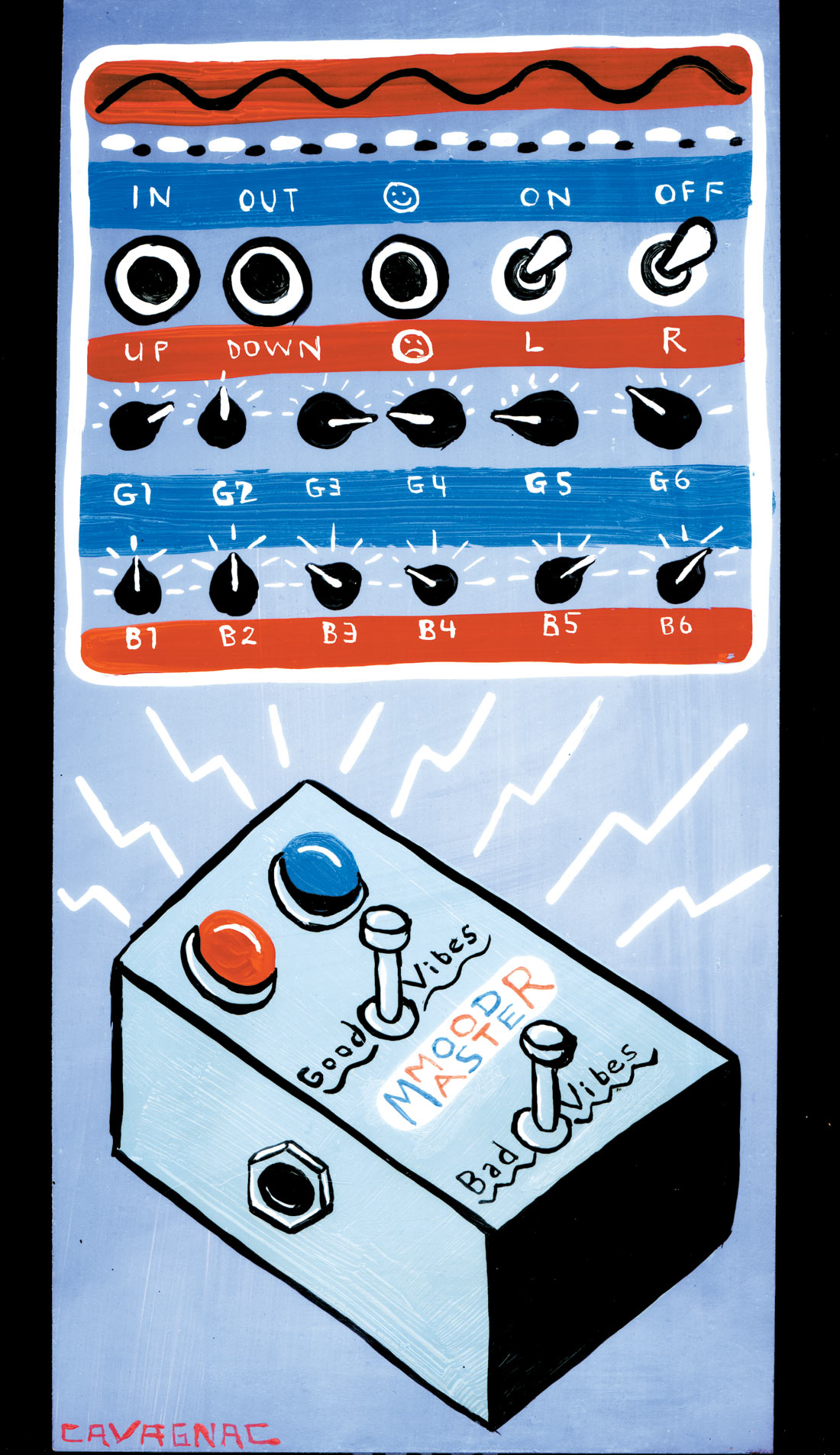I've run out of room in my 11-space 500-series chassis to hold all the mic preamps I'd like to put into it. And my rack isn't big enough for a second chassis, so I end up powering down my chassis and swapping preamp modules as needed. But with the recent addition of two Purple Audio Biz preamps to my collection, I'm doing less swapping. Unlike the other 500-series preamps in my current collection, the Biz is capable of providing a wide range of sounds using its front-panel controls. The Gain pot varies the audio level between a Lundahl input transformer and the Class-A discrete opamps, of which there are two, with a button labeled Dual selecting one or both. And there's a Level pot in front of the Class A/B output opamp feeding a 50/50 transformer made by CineMag. With these three controls (Gain, Dual, Level), it's possible to finesse a wide spectrum of tonality from the Biz.
For example, employing the pair of Biz preamps with an Earthworks TC30K close mic'ing the shell of a snare and an Earthworks SR69 on the top head, I was able to add tremendous amounts of crunch to the attack (especially on rimshots) by turning up the Gain and turning down the Level. Conversely, I could soften the whack and bring out the tail (especially in the higher frequencies) by using low input gain followed by higher output gain. Admittedly, I wasn't able to dial in as much snap using the Biz as I could get from my BAE 312A preamp equipped with an Avedis 1122 opamp-well, at least not straight out-of-the-box-but I felt I had way more options with the Biz. Plus, by swapping out the Purple Audio KDJ3 opamps for Avedis 1122s, maybe I could Frankenstein the preamp into a hybrid somewhere in-between the out-of-box Biz and a BAE?
Using a Royer SF-12 as a stereo overhead mic for drums, again the Biz was a little softer than the BAE. By hitting the Dual button, I could vary the amount of snare that pushed through, and playing with the Gain and Level knobs affected the tail of the snare and high hat. As a bass DI, the Biz had a wonderful way of mellowing out the performance, as if it were lightly compressing and controlling the upper mids while still letting through plenty of airy top-no nasty bite here. And the Dual button added a bit of up-front presence. On vocal, I liked how I could soften the sibilance or add graininess on command. With careful tweaking of the front-panel controls, I was able to record some amazingly smooth female vocals using a Royer R-121 feeding the Biz (with lots of gain available) as well as some aggressive male vocals using a Groove Tubes GT50 FET.
Recording electric guitar is where the Biz really excelled. Using a variety of mics (AKG C 1000S, Groove Tubes GT30 & GT40, Gefell M300 & UMT70S, Royer R-121, SE Electronics SE3) on a variety of amps/cabinets, I never felt like I had to swap out preamps. Instead, I could vary the amounts of two different flavors of crunch by turning up the Gain and Level knobs, and I could bring the upper mids forward by engaging the Dual switch. Also, during a preamp shootout between the Biz and preamps from API, BAE, A-Designs, Seventh Circle Audio, Great River, Focusrite, and Hamptone, the Biz drew out the glassiest sustain from a GT40 medium-diaphragm tube mic on a Mesa Rocket 44 amp; the tone was just gorgeous.
If you're going to start with one 500-series preamp (or pair), the Biz would top my list of recommendations. It sounds as good as any high-end preamp should, but compared to other modular preamps, the Biz's chameleon- like tonal flexibility makes it much more valuable for multitrack recording. Its build-quality is impeccable as are the reputations of Purple's Andrew Roberts and John Klett as designers and techs. And if you feel like tweaking the sound of the Biz further, each of its three opamp sockets will hold any standard discrete opamp, but there's also a DIP socket underneath each to accept any standard IC opamp instead! ($675 MSRP; www.purpleaudio.com)




_disp_horizontal_bw.jpg)